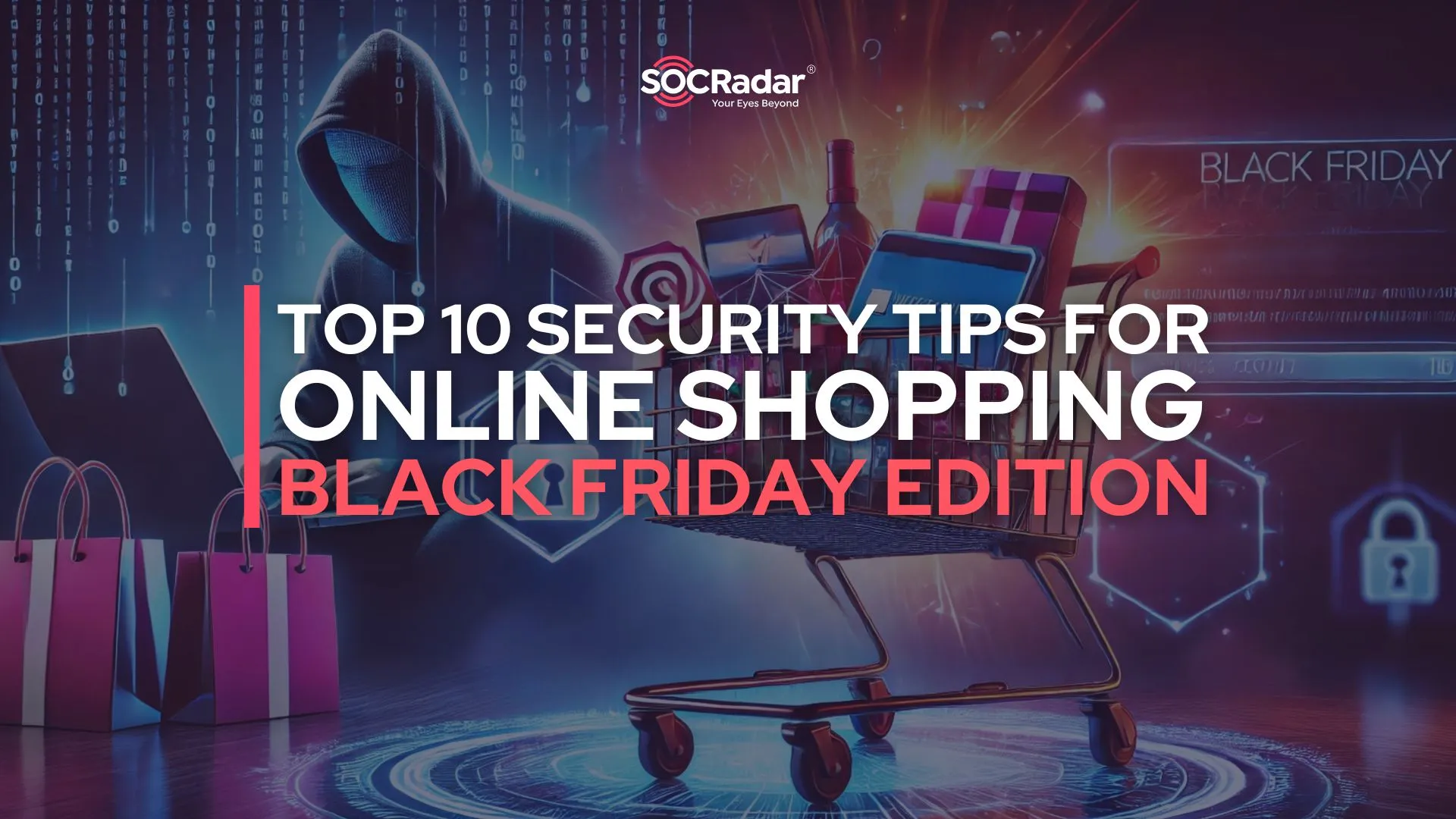
Top 10 Security Tips for Online Shopping (Black Friday Edition)
Black Friday and Cyber Monday are two of the year’s most anticipated shopping events, and cybercriminals know this all too well. After all, these high-traffic days offer them the perfect chance to exploit vulnerabilities in online shopping platforms.
As the holiday season approaches, your e-commerce business is likely preparing for a surge in activity. But while you focus on record-breaking sales, cybercriminals are sharpening their tools, motivated by financial gain, identity theft, and more. The risks are significant—are you prepared to face them?
According to insights from SOCRadar’s “From Black Friday to Cyber Monday: 2024 E-Commerce Threat Landscape Report,” ransomware groups like LockBit, Akira, and Play have increasingly targeted the e-commerce sector.
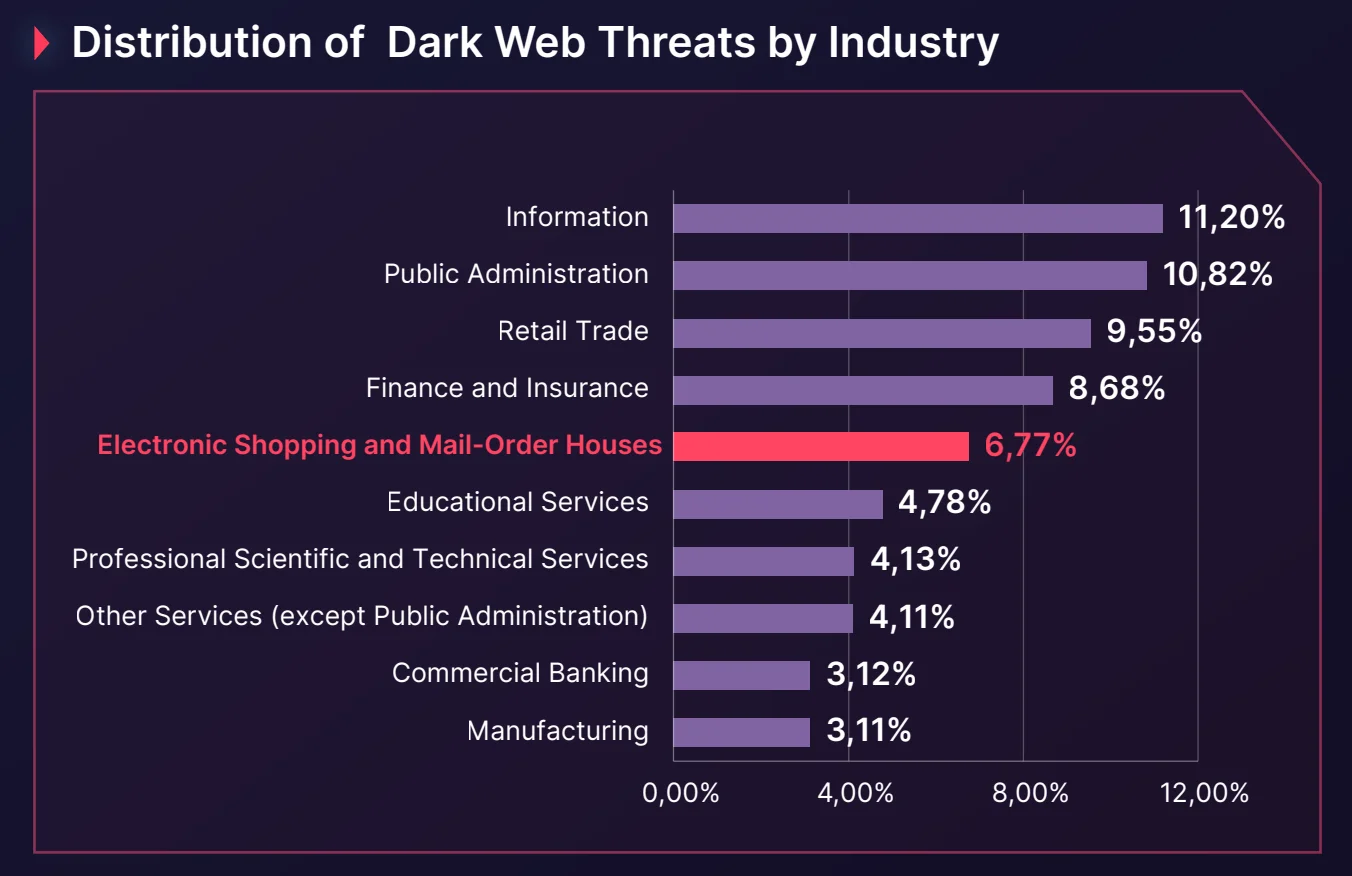
Distribution of Dark Web threats by industry (SOCRadar 2024 E-Commerce Threat Landscape Report)
In 2024 alone, the e-commerce industry accounted for 6.77% of ransomware attacks worldwide, placing it among the top five most targeted industries. These attacks aim to disrupt operations and demand ransoms, causing severe financial and reputational damage.
In this blog post, to help businesses secure their platforms and protect their customers, we will offer 10 actionable tips to navigate this high-risk shopping season safely.
1. Ensure Your Website Uses HTTPS
HTTPS is the foundation of secure online shopping. It ensures that data exchanged between your customers and your platform—such as login credentials and payment details – remains encrypted and protected from interception. Without HTTPS, sensitive information can be exposed to attackers, leaving both your customers and your business vulnerable to data breaches.
Why It’s Important
- Data Security: HTTPS encrypts all data transmissions, making it challenging for attackers to intercept or steal sensitive information.
- Customer Trust: Displaying the padlock icon and “https” in the URL reassures customers that your platform is secure, encouraging them to complete their purchases confidently.
- SEO Benefits: Search engines prioritize HTTPS-enabled websites, improving your ranking and visibility during heavy traffic periods like Black Friday.

Secure your website with HTTPS
How to Implement It
- Update Your SSL Certificate: Ensure your certificate is valid and renewed promptly to maintain secure connections.
- Highlight Security Measures: Use badges or visual indicators to show customers that their data is protected. Many security-aware customers look for these symbols before proceeding with online transactions.
By prioritizing HTTPS, your e-commerce business creates a safer environment for online shoppers, helping to protect customer trust during the busiest shopping season of the year.
2. Educate Employees on Phishing and Fraud Prevention
Cybercriminals don’t just target systems – they exploit people.
Phishing campaigns and domain impersonation attacks are common tactics during Black Friday, aiming to trick employees and customers into revealing sensitive information. Fake emails or vendor requests can quickly escalate into major breaches if unnoticed.
To mitigate these risks, equip your employees with the knowledge to identify suspicious activities. Teach them how to recognize phishing emails that mimic legitimate sources, such as payment processors or trusted vendors. Emphasize red flags like urgent language, unexpected attachments, or misspelled domains.
But education alone isn’t enough. Tools like SOCRadar’s Brand Protection module can monitor the web for fake domains and social media accounts impersonating your brand. In addition, with its Integrated Takedown feature, you can swiftly eliminate these threats, protecting both your business and your customers.
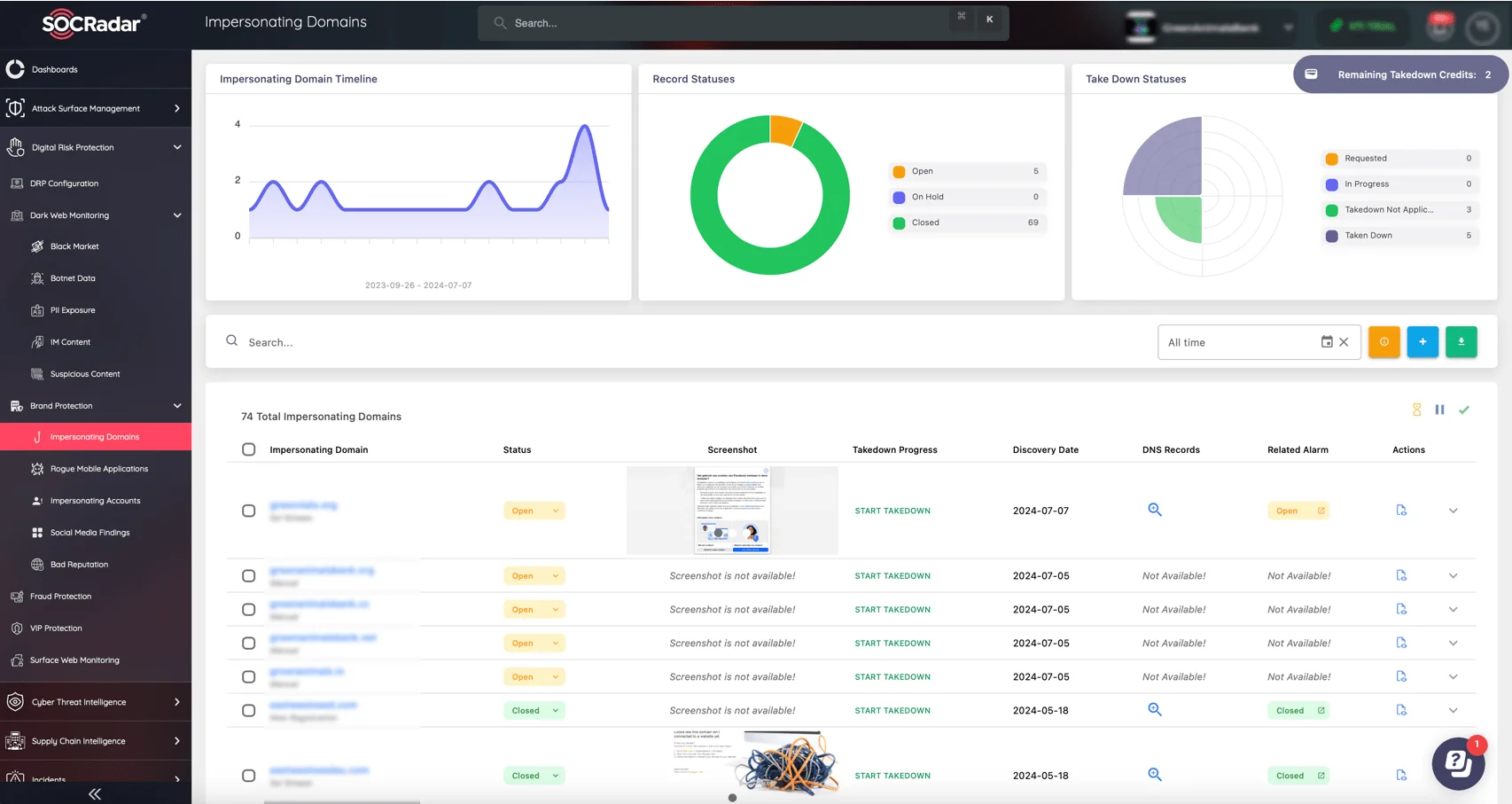
Track impersonating domains, social media accounts, and more via SOCRadar’s Brand Protection module
By combining training with proactive brand monitoring, you can reduce the risk of phishing and impersonation attacks targeting your online shopping platform this holiday season.
3. Deploy Web Application Firewalls (WAFs)
Every online shopping platform faces a constant stream of malicious traffic, especially during events like Black Friday. Attackers frequently use techniques like SQL injection and Cross-site Scripting (XSS) to exploit vulnerabilities in these websites, in hopes of gaining unauthorized access to customer data or backend systems.
A Web Application Firewall (WAF) acts as your platform’s first line of defense against these threats. By filtering and monitoring incoming traffic, a WAF blocks suspicious activities before they reach your site. It can distinguish between legitimate users and attackers, ensuring your website remains secure without disrupting the shopping experience.
Implementing a WAF helps protect your site from both automated attacks and targeted exploits, making it an essential tool to protect your business during peak shopping seasons.
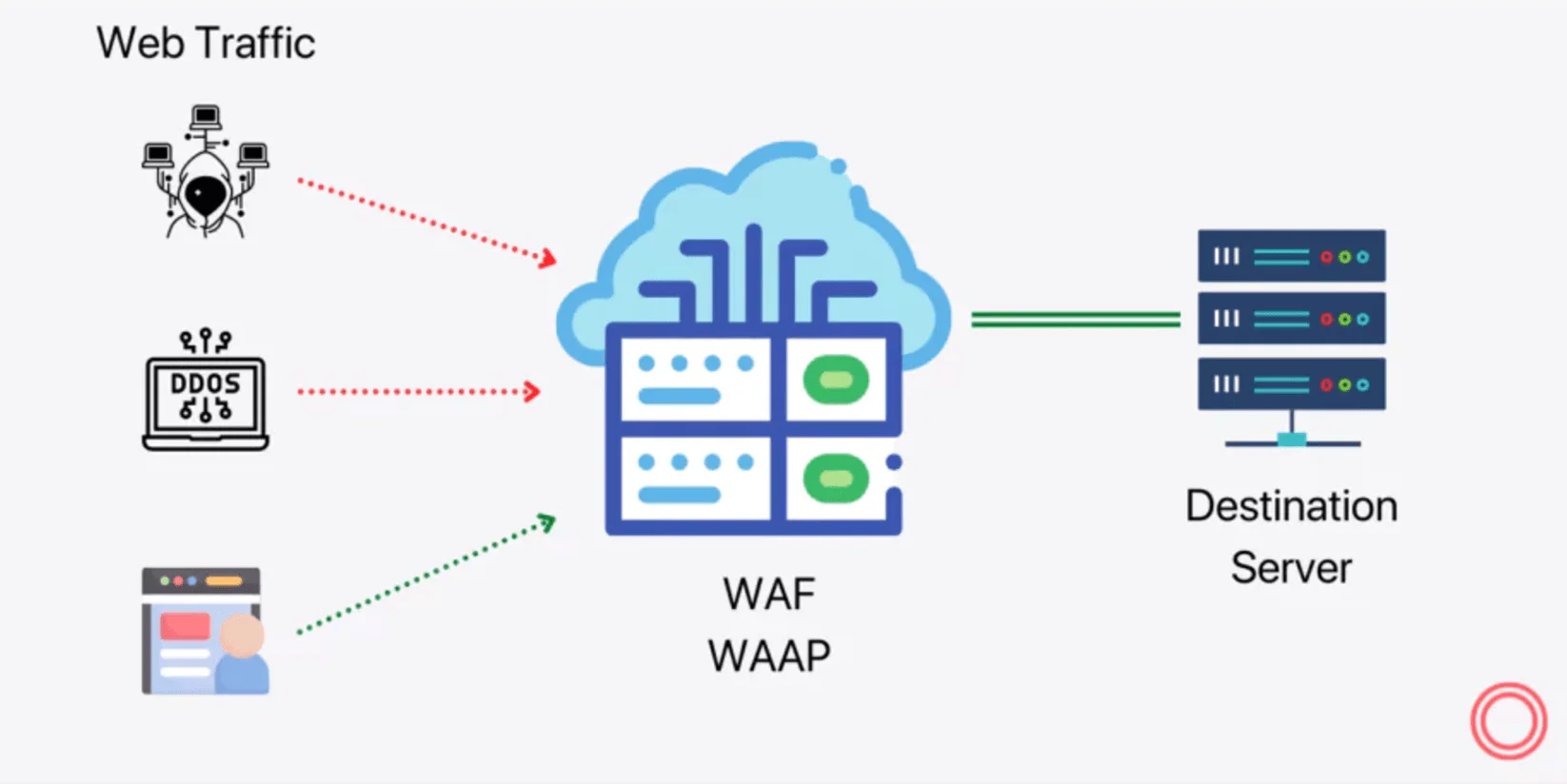
Web Application Firewall (WAF) filtering malicious traffic.
4. Monitor and Update Payment Gateways
Payment gateways are the lifeblood of any shopping website. However, as expected, outdated or improperly secured payment systems are a target for malicious actors looking to intercept transactions or steal payment details.

Payment gateways are prime targets for theft of transaction and payment details.
To minimize this risk, you must ensure that the payment gateways used by your business are always updated with the latest security patches. An outdated system can leave vulnerabilities exposed, providing attackers with opportunities to exploit weaknesses. Regularly review your gateway provider’s updates and implement them without delay.
Compliance with PCI DSS (Payment Card Industry Data Security Standards) is another critical step. Adhering to these standards ensures your payment processing systems meet the industry’s highest security benchmarks, protecting sensitive customer data.
By prioritizing secure and up-to-date payment systems, you reduce the risk of breaches and build customer confidence – both factors for success during Black Friday and beyond.
5. Monitor for Bot Activity and Account Takeovers
Malicious bots are a persistent threat to online shopping platforms. They can scrape pricing data, execute credential stuffing attacks, or even use stolen credentials sourced from stealer logs to compromise customer accounts. The result? Damaged trust, financial losses, and increased vulnerability to further breaches.
Recent data from SOCRadar’s 2024 E-Commerce Threat Landscape Report highlights the scale of this issue. Sensitive information from major online shopping platforms like Amazon, Temu, eBay, and others includes:
- 686,644 email and password combinations
- 131,756 unique victim IP addresses
- 117,068 password hashes
- 29,925 credit card details
How to Protect Your Platform:
- Use Anti-Bot Solutions: Implement tools to detect and block automated attacks targeting your site.
- Monitor Stealer Logs: Regularly analyze logs for credential stuffing attempts and other suspicious activity.
- Track Stolen Credentials: You can leverage SOCRadar’s Threat Hunting feature under the Threat Intelligence module to easily identify stolen credentials and compromised accounts in stealer logs, which serve stolen user data in bulk in Dark Web channels.
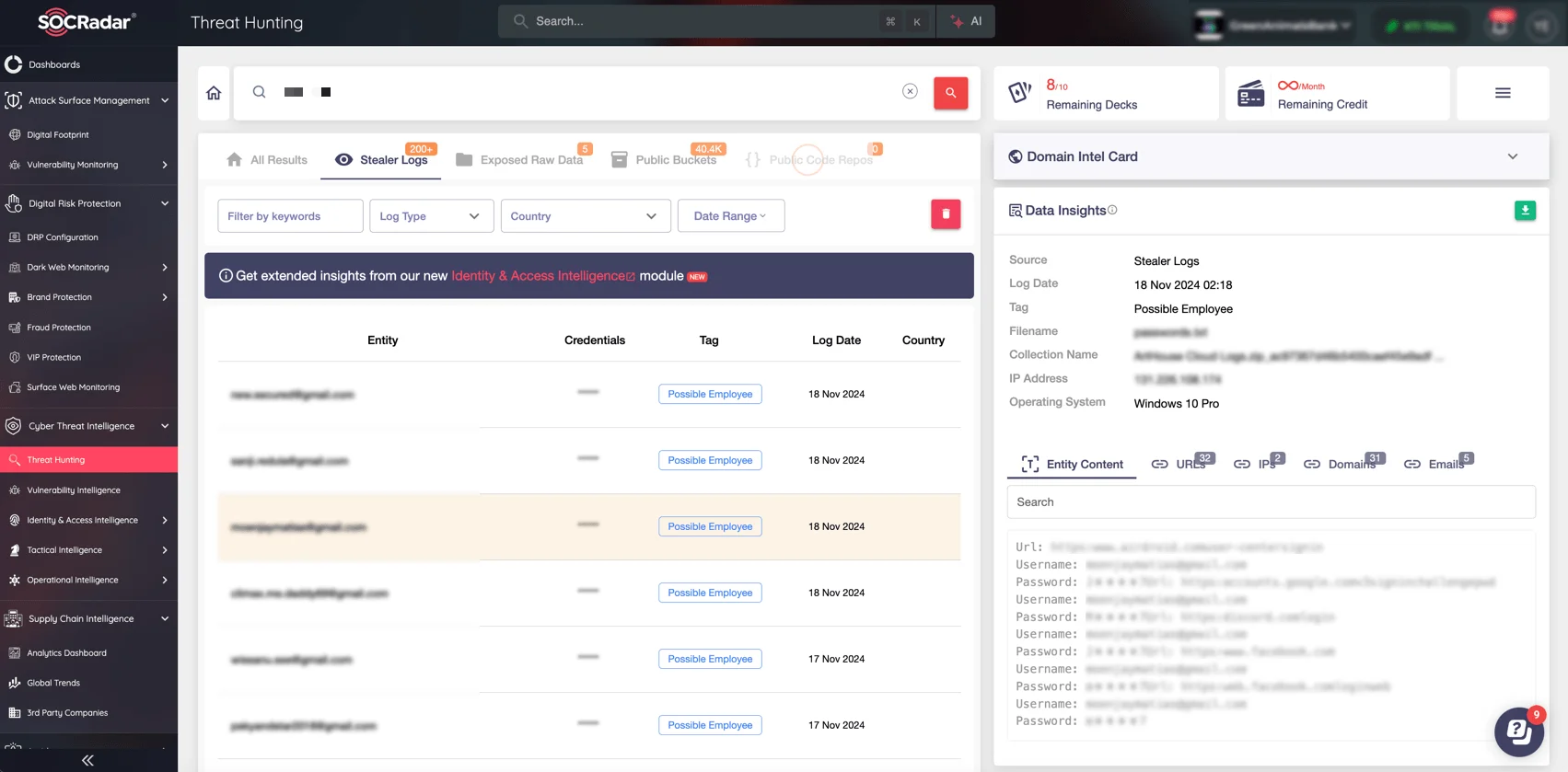
SOCRadar’s Threat Hunting module, Stealer Logs search
By monitoring bot activity and stealer logs, businesses can proactively prevent account takeovers and protect their customers’ sensitive data during the busiest shopping season.
6. Enforce Strong Password Policies
Passwords are often the weakest link in securing online shops, and attackers exploit this link relentlessly. Weak or reused passwords make businesses and customers alike vulnerable to identity theft, brute force attacks, and account takeovers – threats that escalate significantly during online shopping events.
The rise of stealer logs amplifies this risk. Stolen credentials from stealer malware often fuel brute force and credential stuffing attacks, where bots attempt to gain access to accounts by testing combinations of stolen emails and passwords. Without strong password policies in place, even a single compromised account can lead to a cascade of security breaches.
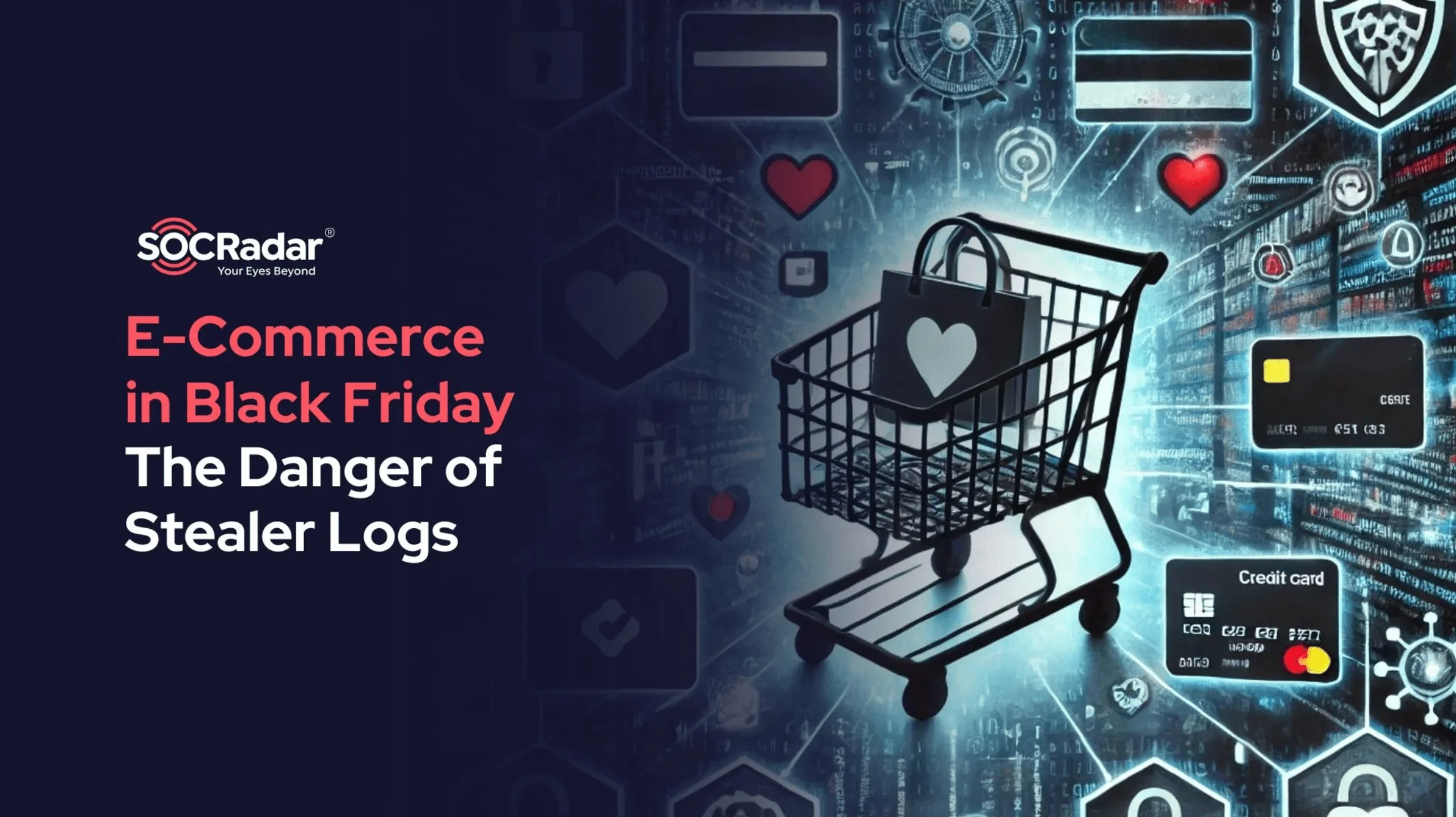
For a more extensive look at how stealer logs target major e-commerce platforms during Black Friday, see our recent article: How Stealer Logs Target E-Commerce Giants During Black Friday
How to Strengthen Password Security:
- For Admins: Implement tools that enforce complex password requirements, such as a mix of letters, numbers, and special characters. Set expiration policies and enable Multi-Factor Authentication (MFA) for added security.
- For Customers: Encourage your customers to create strong, unique passwords by offering password strength meters at registration and login pages. The use of password managers to safely store credentials is also recommended.
By prioritizing password security, businesses can significantly reduce the attack surface for credential-based threats and protect their platforms from being an easy target during the holiday shopping season.
7. Implement Multi-Factor Authentication (MFA) for Admin Access
Multi-Factor Authentication (MFA) adds an essential layer of security to administrative accounts, reducing the risk of unauthorized access to backend systems. However, while MFA significantly enhances protection, it is not immune to bypass techniques. Cybercriminals can exploit weaknesses such as phishing for One-Time Passwords (OTPs), session hijacking, or exploiting poorly configured MFA implementations.
Dark Web forums reveal just how critical protecting access is – according to SOCRadar’s 2024 report, access sales and shares dominate forum posts, making up 46.82% of all entries.
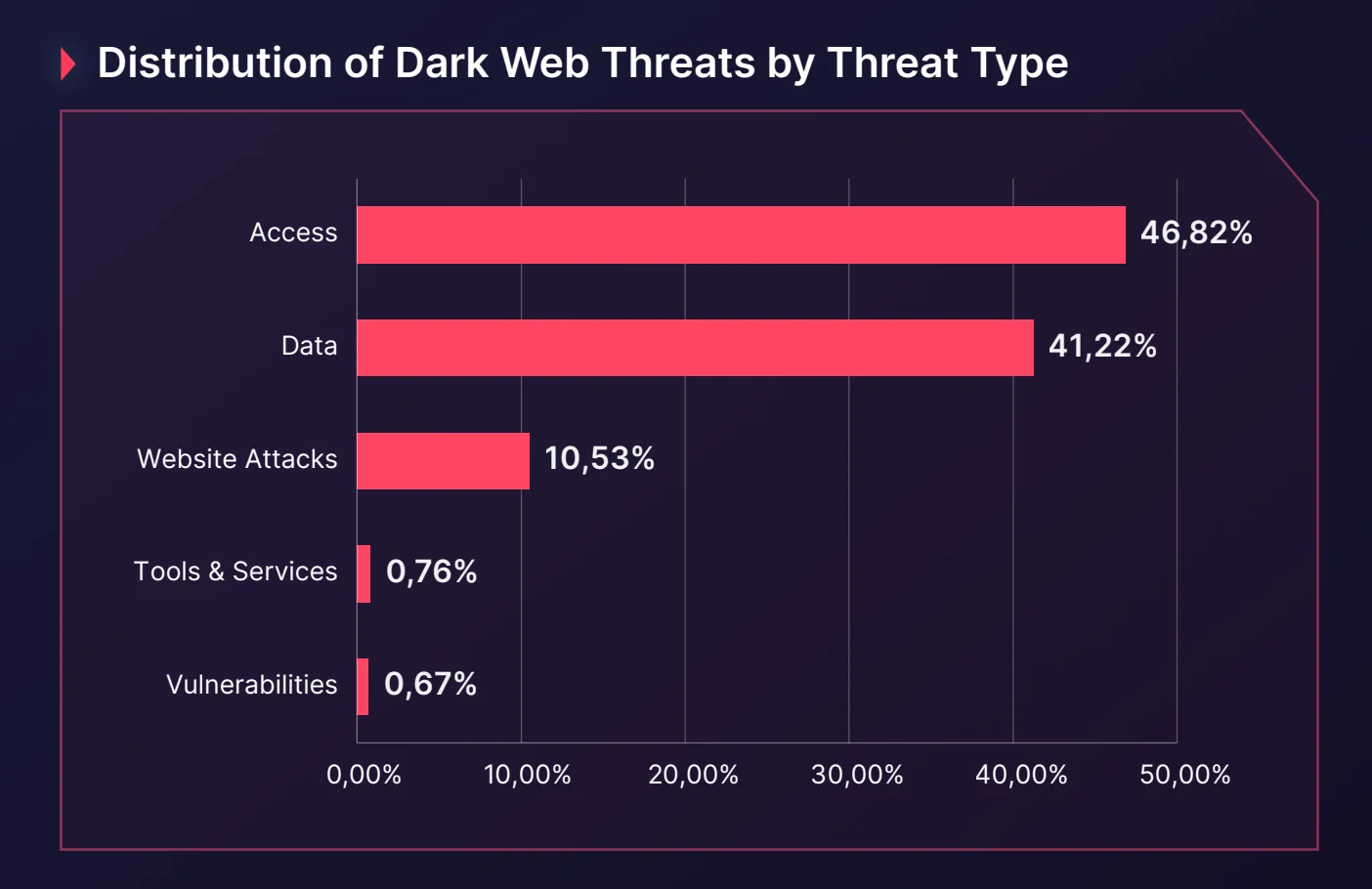
Distribution of Dark Web threats by post types (SOCRadar 2024 E-Commerce Threat Landscape Report)
To mitigate these risks:
- Use Advanced MFA Solutions: Opt for methods beyond SMS-based OTPs, such as app-based authentication or hardware security keys, which are less vulnerable to phishing and interception.
- Educate Admins on Social Engineering Risks: Train staff to recognize phishing attempts that target MFA credentials, ensuring they remain vigilant.
- Implement Adaptive Authentication: Employ tools that analyze login behavior, such as location or device, and prompt additional verification when anomalies are detected.
Paired with secure configurations and ongoing monitoring, MFA can serve as a critical barrier against sophisticated attacks.
8. Monitor the Dark Web for Stolen Data
Hackers often turn to Dark Web forums to sell stolen customer information, credentials, and payment data, making it essential for businesses to keep a close watch on these underground markets. During peak traffic periods, such as Black Friday, the risk of stolen customer information being traded or misused increases significantly.
Recent data from SOCRadar’s report highlights that the U.S. leads as the most targeted country in the e-commerce industry, with 17.16% of all Dark Web posts targeting it. The U.K. and India follow, accounting for 7.20% and 5.11% of posts, respectively.
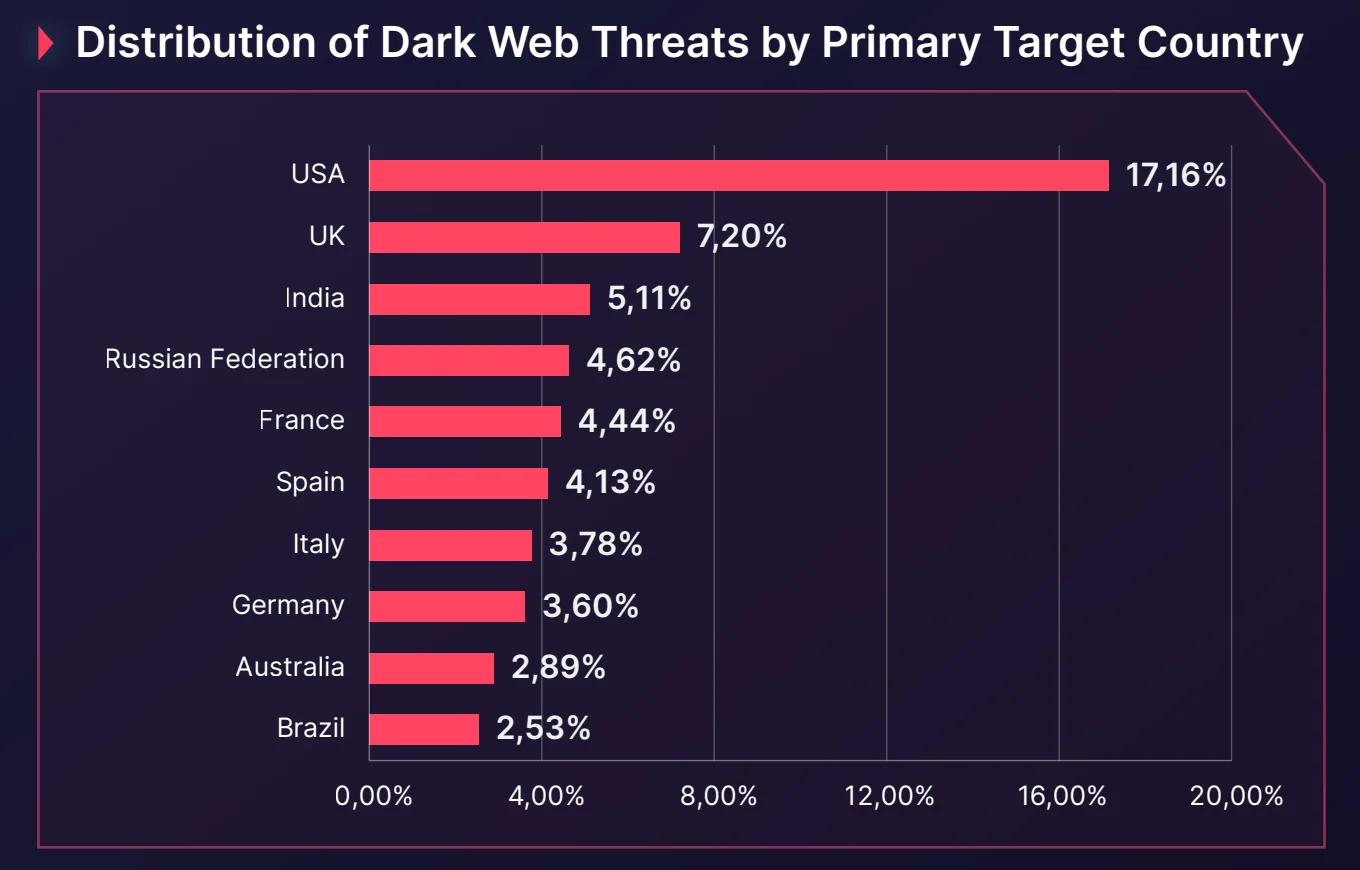
Distribution of Dark Web threats by target country (SOCRadar 2024 E-Commerce Threat Landscape Report)
How to Protect Your Online Shopping Business:
- Use tools like SOCRadar’s Dark Web Monitoring to gain real-time visibility into stolen credentials, payment data, and other sensitive information.
- Act swiftly on identified threats, such as revoking access to compromised accounts or alerting affected customers.
- Focus on identifying high-value information being traded, such as administrator credentials, which could lead to severe breaches.
Proactively monitor emerging threats targeting your business with SOCRadar’s Dark Web Monitoring. Gain visibility into exposed credentials and payment data, and act swiftly to protect your platform and customers.
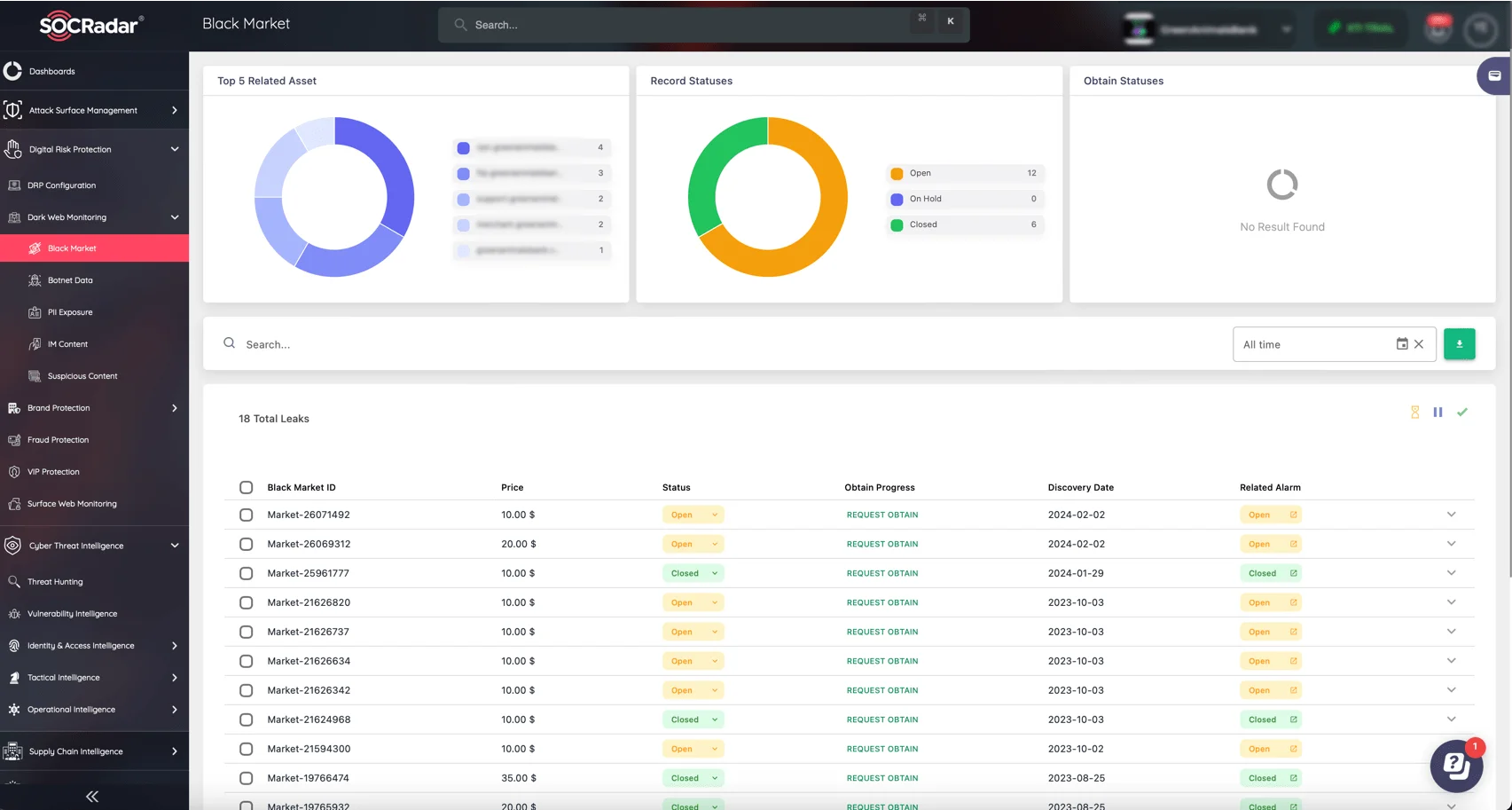
SOCRadar’s Dark Web Monitoring can track Black Market, PII Exposure, Instant Messaging Content, and more to protect your customer, employee, and business-related data across every hacker channel.
9. Regularly Patch and Update Software
Outdated software is like an unlocked door for attackers, exposing critical vulnerabilities and inviting exploitation. And, during the holiday season, e-commerce platforms face an even greater risk. A single unpatched vulnerability can endanger your entire online shopping system, exposing sensitive customer data and disrupting operations.
Businesses need a proactive approach to software maintenance. Implementing a patch management policy ensures that vulnerabilities are identified and resolved swiftly. Automating updates wherever possible can reduce delays and minimize the human error often associated with manual patching processes.
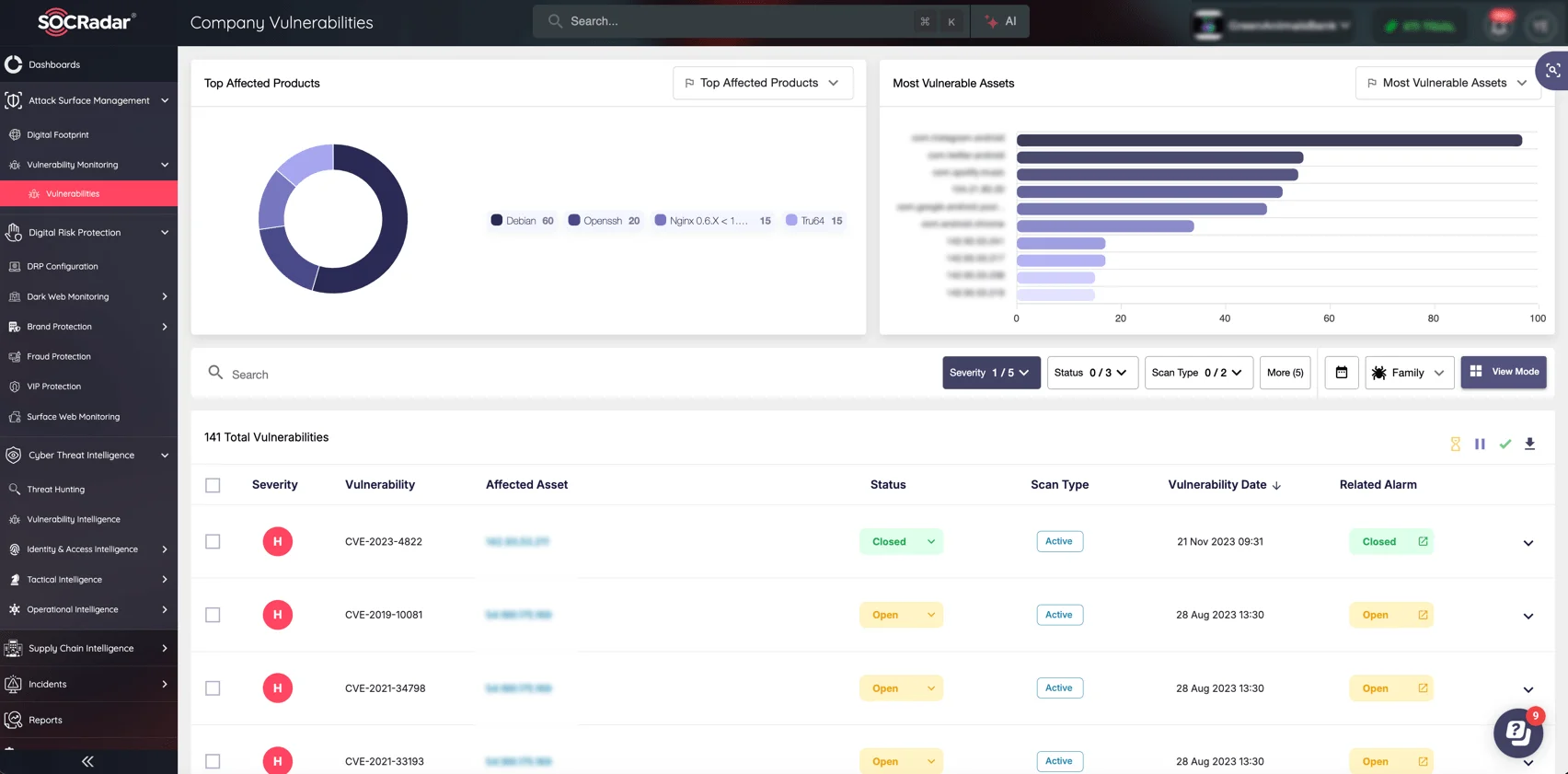
Use SOCRadar’s ASM module to keep an eye on your digital assets and vulnerabilities.
Attackers frequently exploit known vulnerabilities, relying on delayed updates from organizations to find entry points. Staying ahead calls for visibility into your entire digital footprint to close these gaps. As you pursue this goal, SOCRadar’s Attack Surface Management (ASM) module makes it simple for your company to monitor exposed assets, identify vulnerabilities, and prioritize fixes, guaranteeing that your platform is safe.
10. Conduct Stress Testing for Your Online Shopping Website Traffic
Our final tip in this 10-step guide is all about preparation. A well-functioning platform during peak shopping hours can make or break your Black Friday sales. But without proper stress testing, sudden traffic surges could overwhelm your systems, leading to downtime, lost revenue, and even security vulnerabilities.
Beyond the obvious risk of crashes, overburdened systems are also more susceptible to Denial-of-Service (DoS) attacks. Malicious bots may amplify the pressure on your platform, either to disrupt operations or mask other nefarious activities like credential stuffing or scraping data.
Stress testing helps simulate these high-traffic scenarios, allowing you to optimize your website’s performance and identify weak points before they’re exploited. Load-testing tools can mimic Black Friday-level traffic, helping your team prepare for real-world conditions. Combine these efforts with strong anti-bot solutions to make sure your platform handles legitimate traffic while keeping malicious activity at bay.
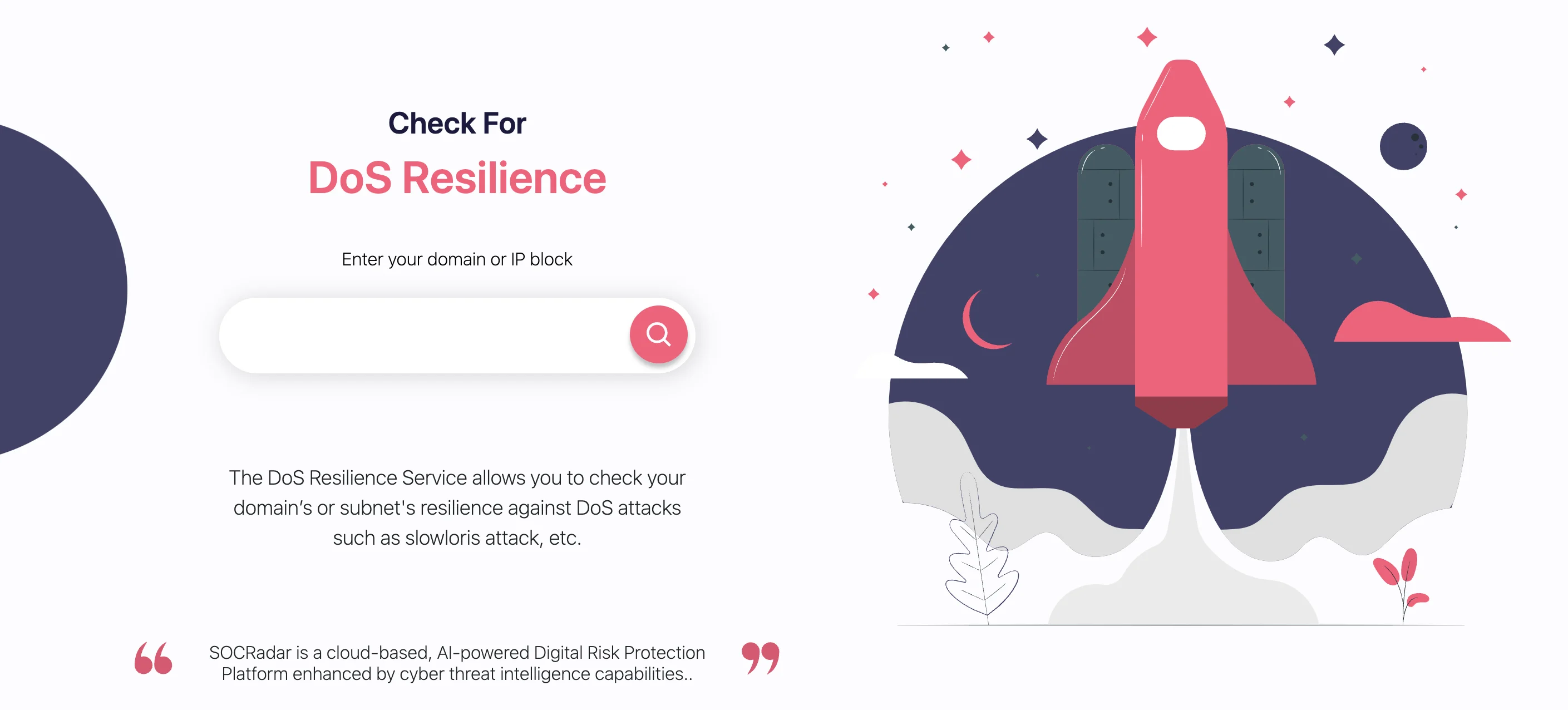
Check for DoS Resilience on SOCRadar LABS
Prepare your platform with SOCRadar LABS’ DoS Resilience Service. Assess your domain’s defenses against DoS attacks like slowloris, identify weaknesses, and ensure uninterrupted performance.
Conclusion
Black Friday, and Cyber Monday, bring opportunities for growth but also heightened risks for online shopping platforms. From ransomware attacks to stolen credentials appearing in stealer logs, the threats are diverse and persistent. Attackers frequently target vulnerabilities in payment systems, administrative access, and even website traffic capacity.
A notable trend this year was that the U.S. emerged as the most targeted country in e-commerce-related Dark Web activity, accounting for 17.16% of all posts discussing stolen credentials and other illicit data. Furthermore, the most common post types on Dark Web forums included access sales and shares, making up 46.82% of all entries.
Implementing the 10 security tips outlined here can significantly reduce your organization’s exposure to such threats, while tools like SOCRadar’s Brand Protection and Dark Web Monitoring provide proactive ways to safeguard your platform and customer trust during this critical shopping season.
For more details on the risks and strategies, explore SOCRadar’s “From Black Friday to Cyber Monday: 2024 E-Commerce Threat Landscape Report”. Security leaders can also access the CISO Brief version for actionable insights tailored to their needs.






































